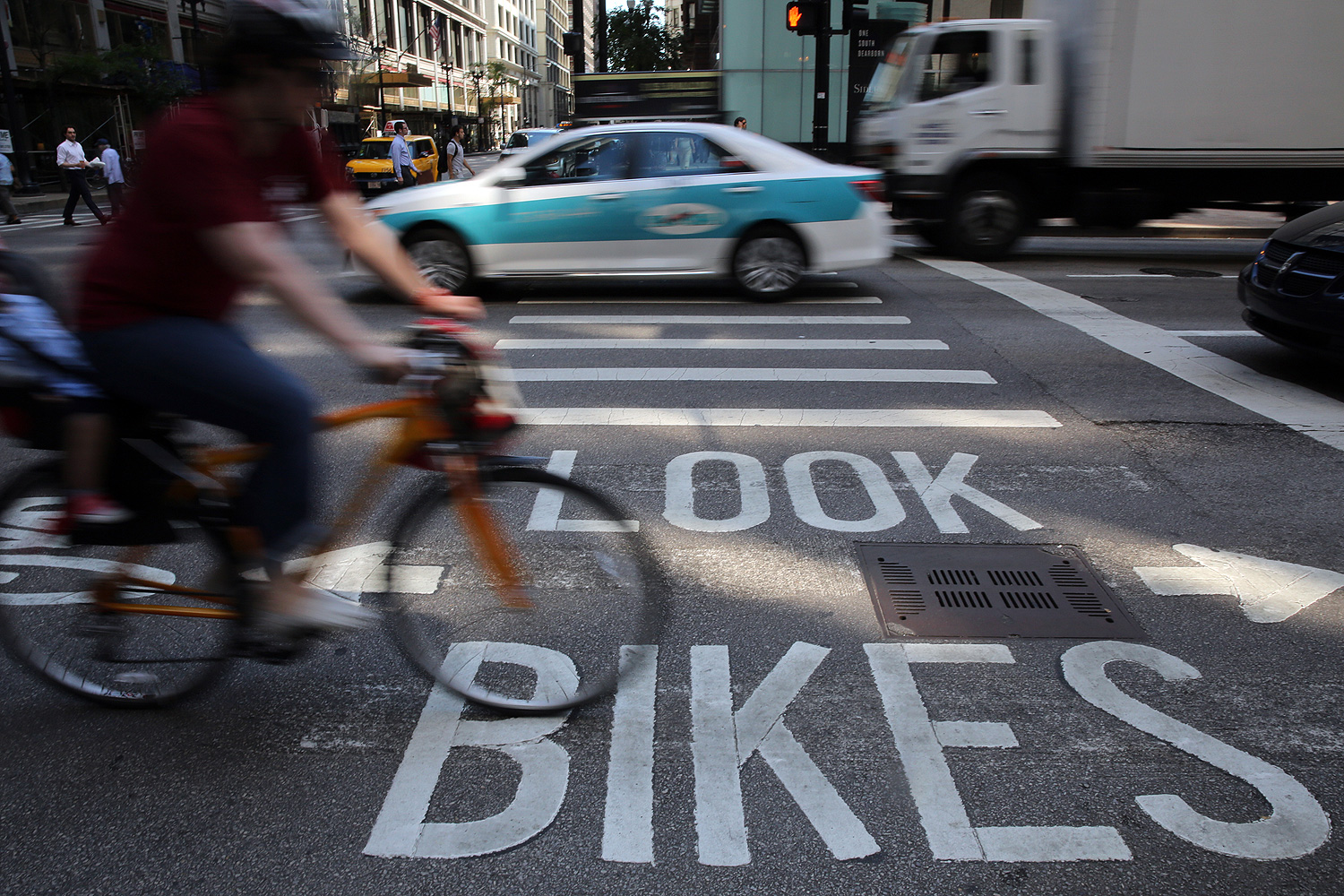In one of the city's periodic attempts to deal with the scourge and/or selling point of cyclists, Ald. Pat Dowell made news by proposing a $25 licensing fee for all bikes and mandatory safety course for all cyclists ("I haven't really thought it through"). Dowell wants it in place of an increased tax on cable TV; in 2011, when Dick Mell proposed bike licenses, it was to combat the "rampant rule-breaking" of cyclists.
It crops up in other cities, too. As Steven Vance explains, when cities actually try it, it doesn't work.
All this is theoretically intended to make Chicago a better place to bike. But the best city to bike in the world, or at least one of those widely acknowledged as such, takes a very odd and completely foreign approach that resembles none of the ideas people focus on in American cities: the "anarchic" city of Amsterdam. And Streetsblog has a wonderful short film explaining how it all works.
One thing immediately struck me: the, indeed, anarchic-looking intersections. It reminds me of a phenomenon I see Chicago periodically. Chicago drivers and pedestrians are no great shakes (we don't jaywalk as much as New Yorkers, but they have much narrower streets), but when the lights at an intersection go out, people are unfailingly polite to one another. Even more so than at four-way stop signs. And in parts of Amsterdam, as noted in the video, that's how it works. People are given the responsibility for watching out for each other, rather than relying on signals or structures.
Of course, it's not total anarchy. Children are introduced to cycling early on, and there's comprehensive biking education. So the kind of consciousness required in Amsterdam is cultivated early on. And cyclists are given more cycle-specific infrastructure, rather than having their existence tolerated on infrastructure designed for cars.
But most striking was the lack of hostility depicted towards behavior that drives driver-cyclist (and cyclist-cyclist) resentment in America: jostling or bumping is treated more like a pedestrian interaction than a vehicular one. It's sort of unimaginable from an American perspective, where one can do a good trade in actively stoking anger towards cyclists (and then hitting the fainting couch when the cyclists you're belittling dare act with anything but the utmost civility in return).
Somehow the Dutch figured out how to just deal. And they did it in about 40 years. It's a fascinating story.



